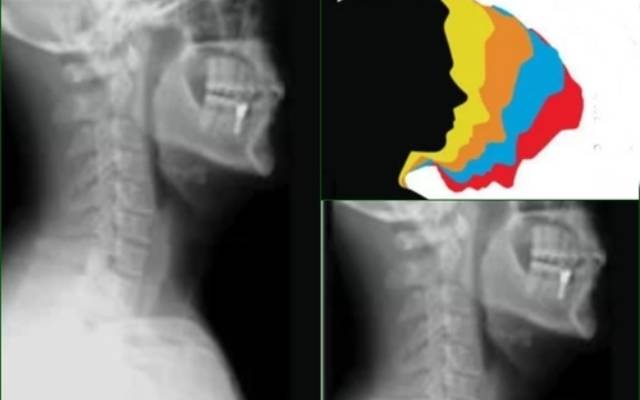World Spine Day Highlights a Growing Concern
On the occasion of World Spine Day, doctors in Faridabad have reported a significant rise in “text-neck syndrome,” particularly among young adults, which constitutes approximately 70% of their outpatient department cases. World Spine Day, observed globally on October 16, aims to raise awareness about the importance of spine health, with this year’s theme being “Move Your Spine.”
Understanding Text-Neck Syndrome
A Modern Ailment with Serious Consequences
The prevalence of text-neck syndrome, a condition where neck muscles become strained and stiff due to poor posture, long hours spent in front of screens, and inadequate ergonomics in the workplace, is causing a growing concern among healthcare professionals. This syndrome can lead to long-term spinal complications and adversely affect the overall quality of life.
Dr. Tarun Suri’s Insights
Expert Commentary on the Text-Neck Epidemic
Dr. Tarun Suri, Head of Spine Surgery at Amrita Hospital Faridabad, has noted that poor posture is now the most common cause of back and neck pain among their outpatient department patients. An alarming 70% of patients fall into this category, with poor screen etiquette being a major contributing factor. Many individuals frequently use their gadgets with their neck bent for extended periods, which can lead to text-neck syndrome. Young adults between the ages of 25 and 45 are the most commonly affected by postural back pain, according to Dr. Suri.
The Consequences of Poor Posture
Why Text-Neck Syndrome Is More Than Just an Aesthetic Concern
Research has shown that poor posture is the primary cause of neck and back pain in young and middle-aged individuals. Over time, this can damage spinal discs, cause muscle spasms, and even result in chronic pain, disc degeneration, and surgery in severe cases. Work loss, hospital visits, and treatment expenses associated with neck and back pain can also have a significant societal impact.
Contributing Factors to Poor Posture
Identifying the Culprits
Dr. Suri identified several key factors contributing to poor posture, including poor workplace ergonomics. This involves sitting for extended periods without the correct chair and desk height, which places considerable stress on the lower back and neck. Chronic stress is another detrimental factor to spinal health, causing neck, upper back, and shoulder muscles to tighten, leading to misalignment and poor posture.
The Young and the Affected
A Growing Concern for Our Youth
Children aged 10 to 20 years are also experiencing postural spine pains. These issues are often attributed to poor studying posture, excessive gadget use, and carrying heavy school bags.
Preventing Text-Neck Syndrome
Proactive Measures for a Healthier Spine
To combat text-neck syndrome and poor posture, Dr. Suri emphasized the importance of recognizing early warning signs, such as neck pain, altered spinal alignment, lower back pain, and morning stiffness. These symptoms should not be ignored as they can lead to chronic pain. However, with proper exercises and practices, these symptoms can be prevented.
Practical Tips for Maintaining a Healthy Posture
Simple Changes to Improve Spine Health
Dr. Suri advised individuals to use digital devices at eye level, preventing them from bending their necks. Holding a cell phone near the ears and tilting the neck for extended periods should be avoided, and the speakerphone or headphones should be used instead. While sitting, hips and knees should form approximately a 90-degree angle, with feet flat on the ground. The back should remain in a neutral position, avoiding hunching or slouching.
Taking Breaks for a Healthier Spine
The Role of Frequent Breaks
For those who spend long hours sitting and working, Dr. Suri recommended taking a 60-second break to stretch the back every 20-30 minutes. This can help release intradiscal pressures and improve circulation in spine tissues and muscles, ultimately promoting spine health.

















